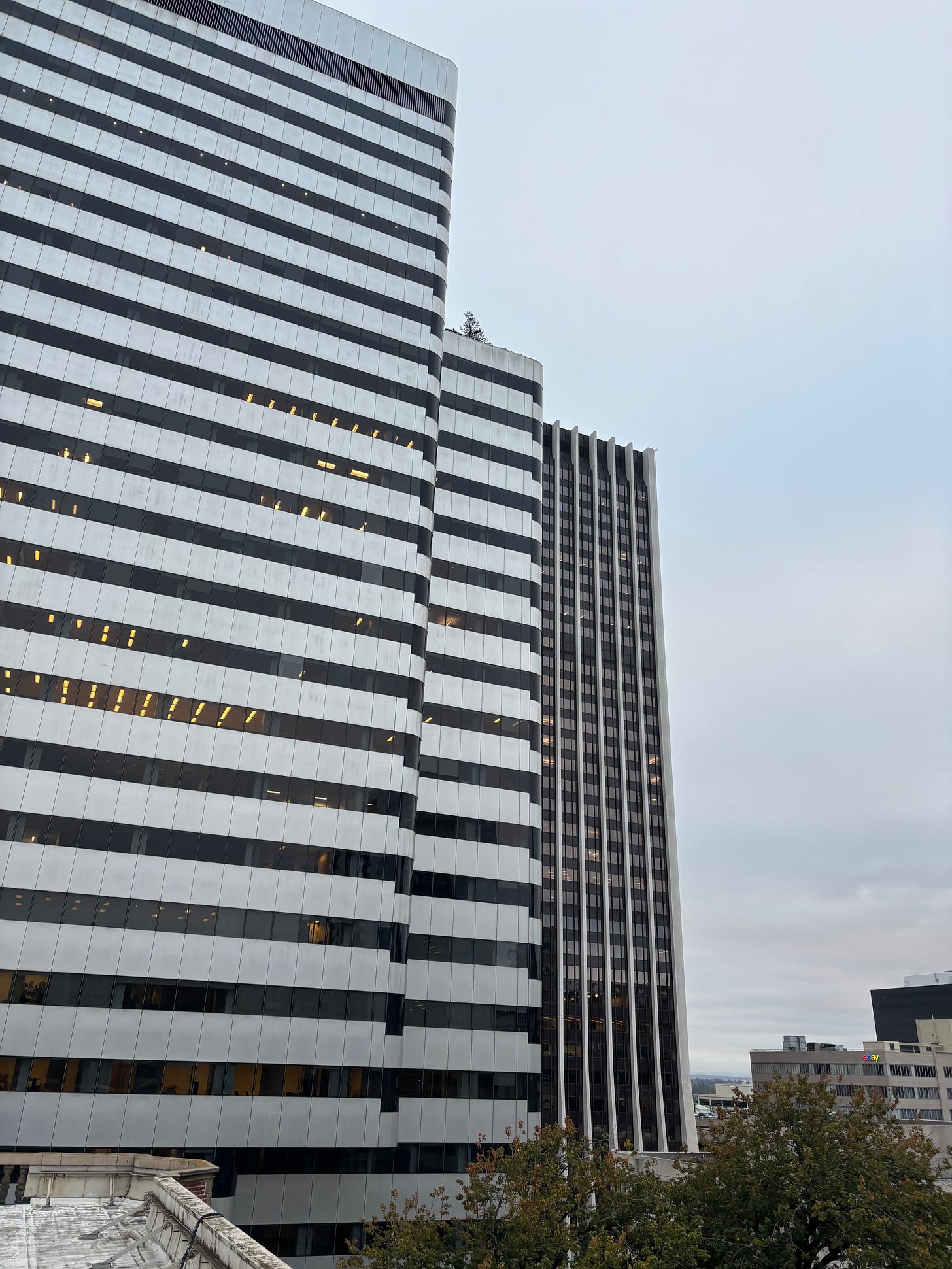Homeless shelter space is all around--and above--Portland
Pioneering homeless advocate Homer Williams says city should rent vacant office space in high-rises

When Homer Williams talks about solutions to Portland’s homelessness crisis, people listen.
Williams was 10 years ahead of his time when he proposed a 400-bed shelter in Terminal 1 along the Willamette River—which the City Council blocked on zoning grounds—and three years later raised private funds to open a 100-bed homeless navigation center on Northwest Naito Parkway that still operates, though now under Multnomah County management.
His next idea? Create shelters in some of downtown’s vacant office spaces.
“Overnight, that would give us all the space we would need,” he said.
Williams is not impressed with Mayor Keith Wilson’s drive to open 1,500 overnight-only shelter beds in sites around the city. Shelters must operated 24/7 to address the multifaceted needs of people living on Portland streets, he said.
On top of that, community resistance to shelters near their homes is formidable, and Williams does not believe the mayor can approach his stated goal by Dec. 1.
Why haven’t public officials considered renting space in largely vacant office towers? Because they are not deemed safe for human habitation as they were built to lower seismic standards pertaining to office use. Williams sees irony here in that these modern high-rises have served high-end professional workers who presumably have given little thought to their risk during earthquakes, but building codes assume that sleeping occupants need more protection than those who are alert at their desks.
But the higher seismic standard could be waived, at least temporarily during a declared housing emergency, at the order of the governor, Williams said.
“I wish you would write that,” he said.




Homer is most assuredly not crazy. Besides the largely empty PacWest center, which Allan shows in his piece, the new Ritz Carlton building is literally a vertical ghost town. Essentially none of the condos have sold. Excellent piece last year in the New Yorker magazine about efforts like this underway in New York City. (Subscription may be required) Can Turning Office Towers Into Apartments Save Downtowns?https://www.newyorker.com/magazine/2024/05/06/can-turning-office-towers-into-apartments-save-downtowns
So the “solution” is to take inappropriate buildings all over the city and slowly destroy them by putting large populations of mentally ill and drug-addicted individuals inside? Have we simply abandoned any hope that tourists might someday return and want to stay in these places? Are we just telling nearby businesses and residents, “too bad”? When you planted roots here, it may have been a luxury hotel — but now it’s a mismanaged shelter, and your property values and quality of life don’t matter?
If the goal is to cement Portland’s reputation as a homeless and drug mecca, this is the way to do it. Keep driving taxpayers and businesses out while allowing the street population — and all the dysfunction that come with it — to expand unchecked. And please spare us the wisdom of the so-called mastermind behind the Navigation Center. That shelter has been anything but a success, and everyone living nearby knows it.
What the state actually needs is serious, sustained investment in mental health institutions, treatment facilities, and the laws that support involuntary commitment when necessary. We need enforcement of existing laws, not permissive drug policies that normalize hard-drug use and the chaos it breeds. We need fewer taxes, less bureaucracy (and less corruption), so it’s actually possible to run a business here.
The real solution is to put residents and businesses — the very people who make this city function — back at the center of policy. Stop turning homelessness into Portland’s defining industry and start governing for the people who live, work, and invest here.
If that is done, I’d wager that a large part of the current issues start to take care of themselves.